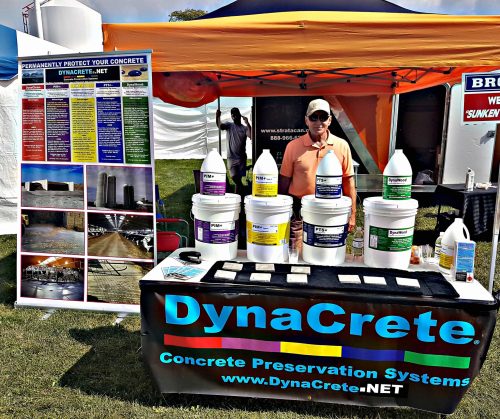History
Some background regarding the initial testing of DynaCrete products in the 1990s and the most recent testing in 2019/2020 on some of the 3 million square feet of concrete bridge decks treated from 1997 to 2000
In 1997 the BC MOTH (Ministry of Transportation and Highways) was planning The Island Freeway Project, which would see a new, 4-lane, 500 km freeway from Victoria to Port Hardy on Vancouver Island. This freeway would include over 3 million square feet of new, 4-lane, concrete bridge decks.
BC MOTH up until this time had been applying linseed oil on their bridge decks. Linseed oil would work as a waterproofing coating for a year or two and but did nothing to reduce wear on the decks.
We explained how we could treat these decks with a product that would not only permanently waterproof the decks, but also significantly harden them, reducing wear due to the abrasion from tire wear. They decided to test our product.
Over the following year, our deep penetrating product was applied to treat 3 of 4 lanes on approximately 70 bridge decks totalling over 500,000 square feet. About half of these decks were new decks and half were existing decks of various ages with various degrees of deterioration, to the point where the worst decks had all the fines sluffed off, and loose rocks delaminating.
After 9 months of testing and onsite inspections, BC MOTH specified our product as the “only product to be used” to treat the over 3,000,000 square feet of bridge decks. No “or similar” products would be allowed. Applications began in 1999.
In 2019 in concert with BC MOTH we chose some bridge decks to be tested. We wanted to test one deck which fairly represented most of the decks which appeared perfect, and one deck of the few which had developed 1 to 2 foot cracks across the deck.
Testing would be conducted by Metro Testing, coordinated by Prakash Joshi of the Vancouver office, and Jennifer Doxey, p.eng. from the Victoria office was the onsite engineer.
Tests would include ASTM C1202/AASHTO T277 Rapid Chloride Permeability, ASTM C1353 Taber Abrasion, and Flatness Testing across the lanes to measure wear grooving due to abrasion. Testing was concluded in October 2019. Test results and the 17-page test summary were available by late March 2020.
The test results showed the decks permeability still ranged from low to medium and wear ranged from 1 to 31/2 mm.
These decks are salted with rock salt many times a year, and each spring pressure washed to remove residual salt and sand.
The test results, summary, tables, etc., are available upon request.
